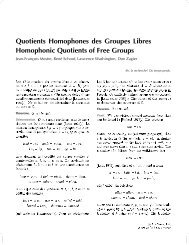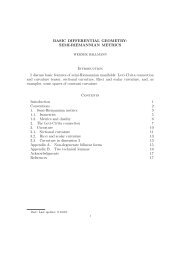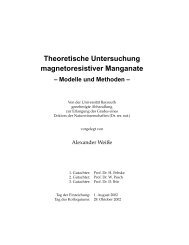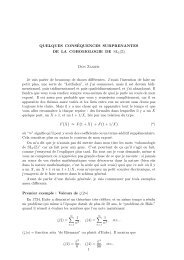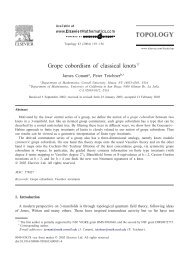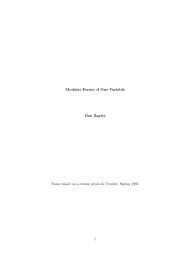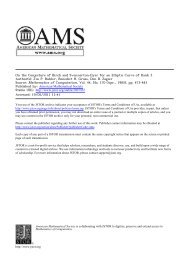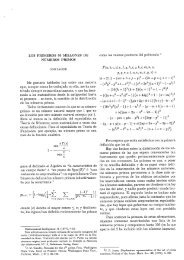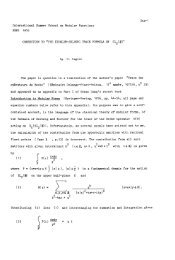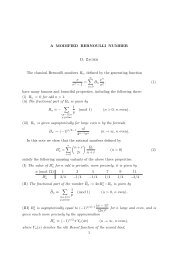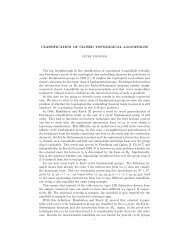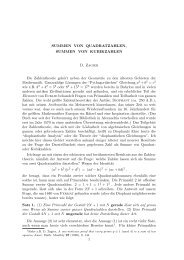Elliptic Modular Forms and Their Applications - Up To
Elliptic Modular Forms and Their Applications - Up To
Elliptic Modular Forms and Their Applications - Up To
You also want an ePaper? Increase the reach of your titles
YUMPU automatically turns print PDFs into web optimized ePapers that Google loves.
42 D. Zagierof K, whichfactorsasζ(s)L(s, ε D ), the product of the( Riemann ) zeta-functionD<strong>and</strong> the Dirichlet L-series of the character ε D (n) = (Kronecker symbol).Therefore in this case we get ∑ [Q] r(Q, n) =w ∑ d|n ε D(d) (an identitynknown to Gauss) <strong>and</strong> correspondinglyf χ0 (z) =1 w∑[Q]Θ Q (z) = h(D)2+∞∑n=1( ∑d|n( Dd))q n ,an Eisenstein series of weight 1. If the character χ has order 2, then itis a so-called genus character <strong>and</strong> one knows that L K (s, χ) factors asL(s, ε D1 )L(s, ε D2 ) where D 1 <strong>and</strong> D 2 are two other discriminants with productD. In this case, too, f χ (z) is an Eisenstein series. But in all other cases, f χis a cusp form <strong>and</strong> the theory of modular forms gives us non-trivial informationabout representations of numbers by quadratic forms.♠ Binary Quadratic <strong>Forms</strong> of Discriminant −23We discuss an explicit example, taken from a short <strong>and</strong> pretty article writtenby van der Blij in 1952. The class number of the discriminant D = −23is 3, with the SL(2, Z)-equivalence classes of binary quadratic forms of thisdiscriminant being represented by the three formsQ 0 (x, y) = x 2 + xy +6y 2 ,Q 1 (x, y) = 2x 2 + xy +3y 2 ,Q 2 (x, y) = 2x 2 − xy +3y 2 .Since Q 1 <strong>and</strong> Q 2 represent the same integers, we get only two distinct thetaseriesΘ Q0 (z) = 1+2q +2q 4 +4q 6 +4q 8 + ··· ,Θ Q1 (z) = 1+2q 2 +2q 3 +2q 4 +2q 6 + ··· .The linear combination corresponding to the trivial character is the Eisensteinseriesf χ0 = 1 ( ) 3∞ΘQ0 +2Θ Q1 =22 + ∑( )) −23q nd= 3 2 + q +2q2 +2q 3 +3q 4 + ··· ,n=1( ∑d|nin accordance with the general identity w −1 ∑ [Q] r(Q, n) =∑ d|n ε D(d) mentionedabove. If χ is one of the two non-trivial characters, with valuese ±2πi/3 = 1 2 (−1 ± i√ 3) on Q 1 <strong>and</strong> Q 2 ,wehave



